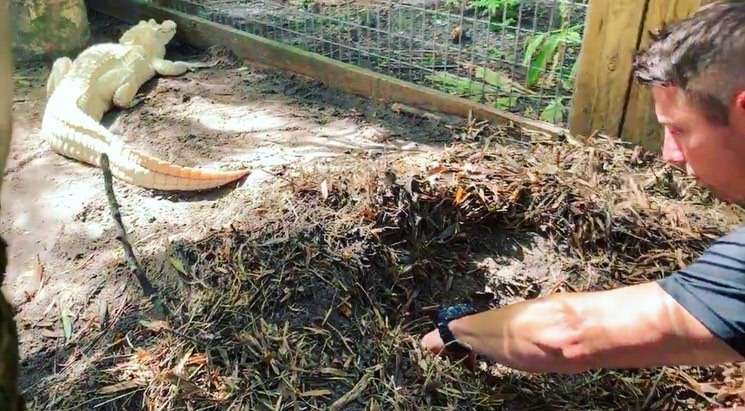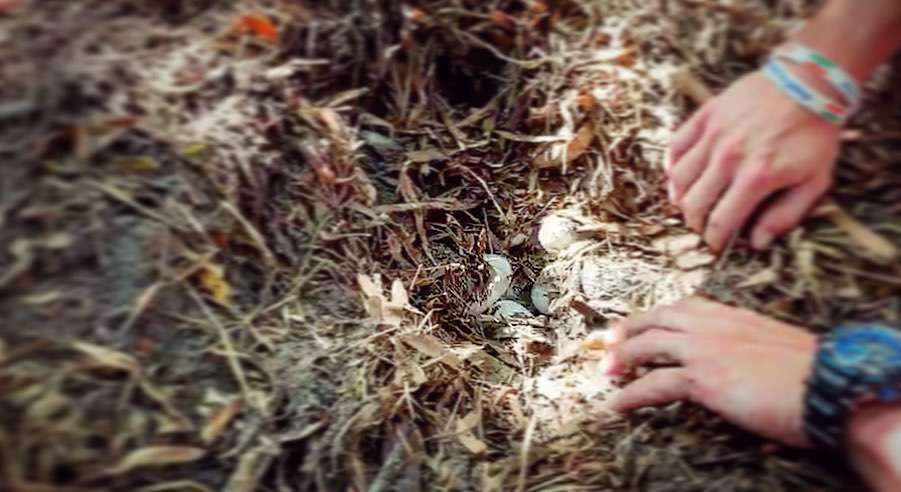A wildlife park in Florida is now home to one of the rarest batch of alligator eggs in history.
Its two albino alligators, Snowflake and Blizzard, have produced 19 eggs.

It’s one of the only albino-to-albino alligator breeding programs in existence, and according to the park – which has taken the eggs into incubation for their own safety – the signs are pointing to success.
Snowflake, a 25-year-old female, and Blizzard, a 14-year-old male, have been living at Wild Florida since 2017. Both had previously lived separately in captivity until Wild Florida built the perfect environment for them to live together, which has paid off hugely.
On June 7, the park’s “croc squad” noticed Snowflake appeared to have built a nest and was acting defensively over the area. By distracting her, they managed to sneak in and take a look, and to their delight discovered 19 eggs.


Eggs removed
Crocodilians – crocodiles and alligators – are famously caring mothers, building nests, staying with their eggs until they hatch, and carrying the hatchlings around gently in their mouths.
The park decided to remove the eggs, however, for several reasons:
- Snowflake is blind due to her albinism. She could squashed them.
- To protect them from natural predators (fire ants or raccoons)
- Blizzard could eat them.
Since successful breeding between two albino alligators, which is guaranteed to lead to albino babies, is so rare, the park is doing everything in its power to ensure success.
According to a video posted on Wild Florida, the eggs are showing signs of fertilization.
Alligator eggs have two layers to begin with, a hard outer shell like chicken eggs and a softer, leathery inner one to protect the gatorlings. As they develop, the hard outer shell gets thinner and the egg gets softer, as you can see in these eggs; the band of opaque white and more transparent white is clearly visible.
“So that’s showing that these guys are fertile, they’re connecting to the embryo and they’re developing, they’re healthy, fertile eggs,” croc team member Christian Martinez explains in the video. “It’s working, fingers crossed!”
Being albino
Snowflake and Blizzards’ albinism means they have a recessive gene that affects the melanin they produce – in this case, none – which gives them their white skin and red eyes. This means they have trouble regulating their body temperature, which gators do through their skin, and can get sunburnt easily. They also have poor vision.
For an albino baby, life in the wild would be near impossible. Plus, its bright white skin would act like a beacon for any watching predators. The park says incubating them in captivity means the eggs’ chances of hatching jump from around 60 percent to 95 percent.
Alligator eggs take around 60 days to incubate, so the pitter-patter of tiny webbed feet should hopefully be heard around September. As there are only around 20 known albino alligators in the world, this little bunch of eggs could potentially double the number of albino gators in the world. That would be truly awesome!
[Wild Florida, WFTV, IFLS]












